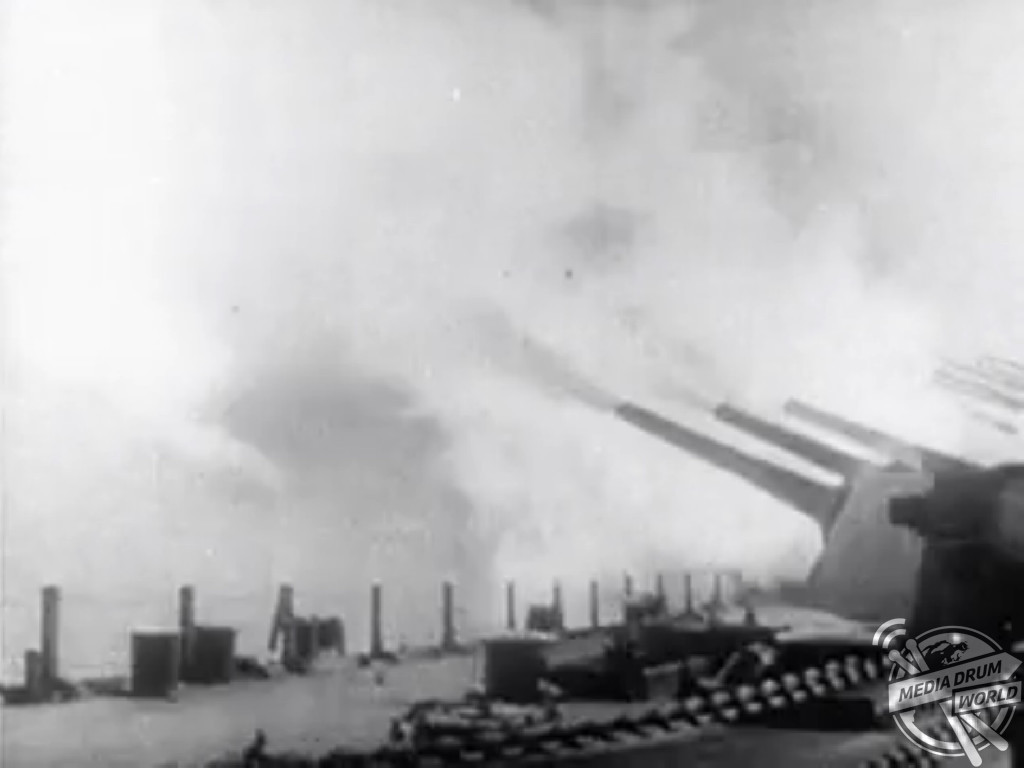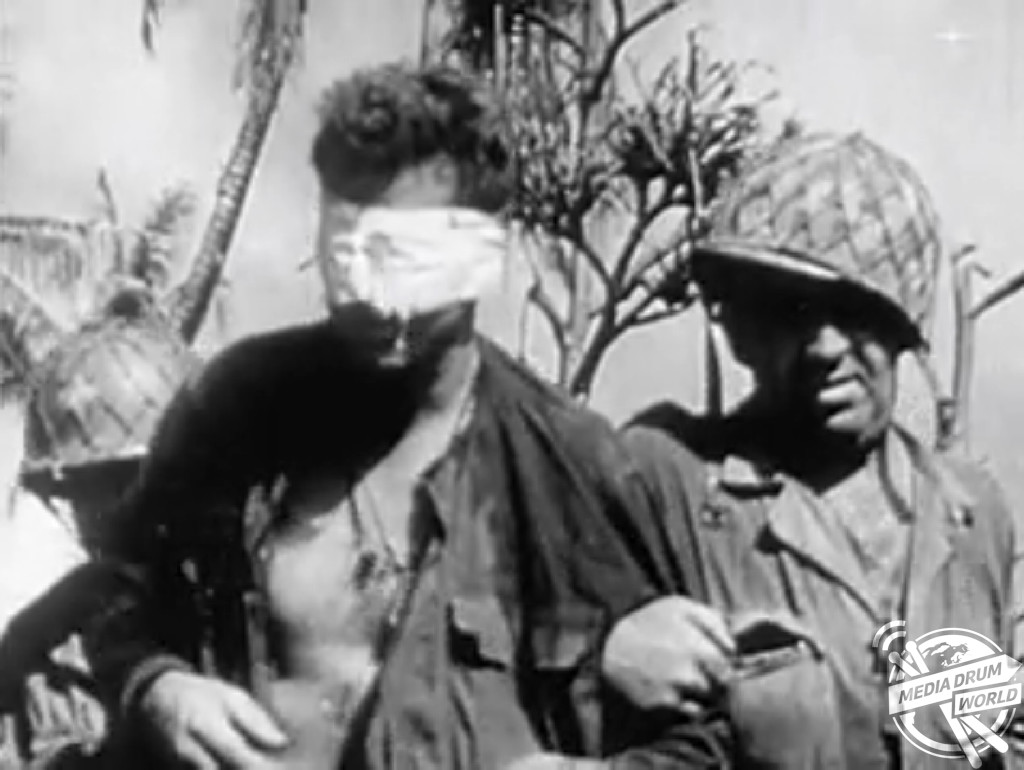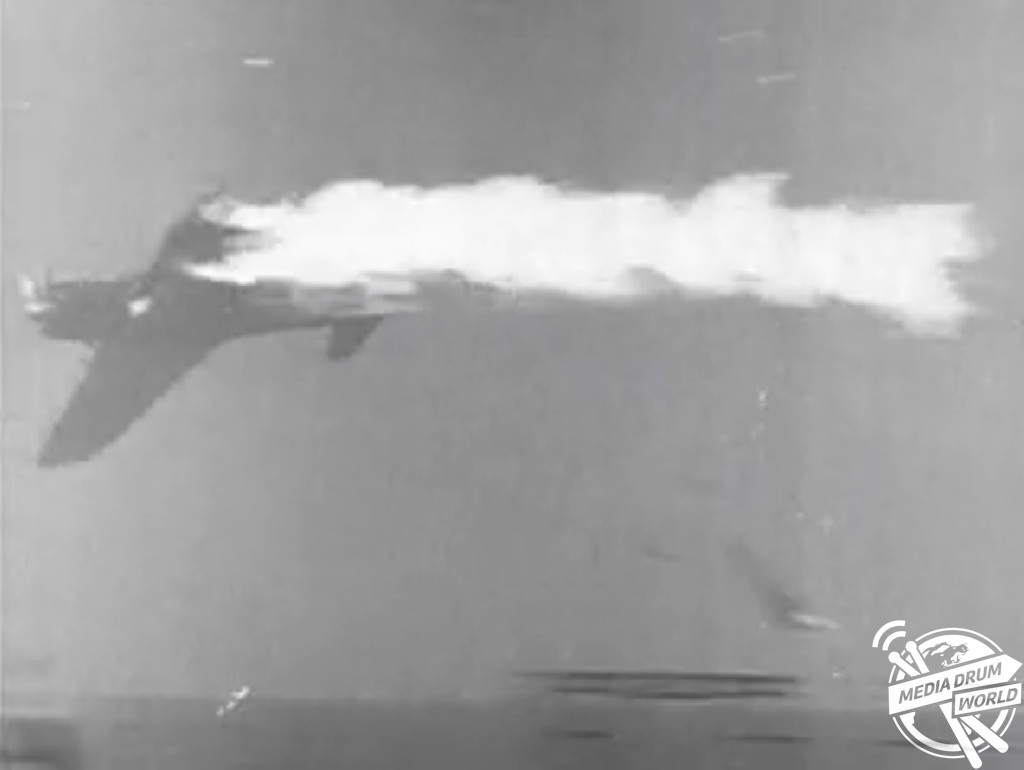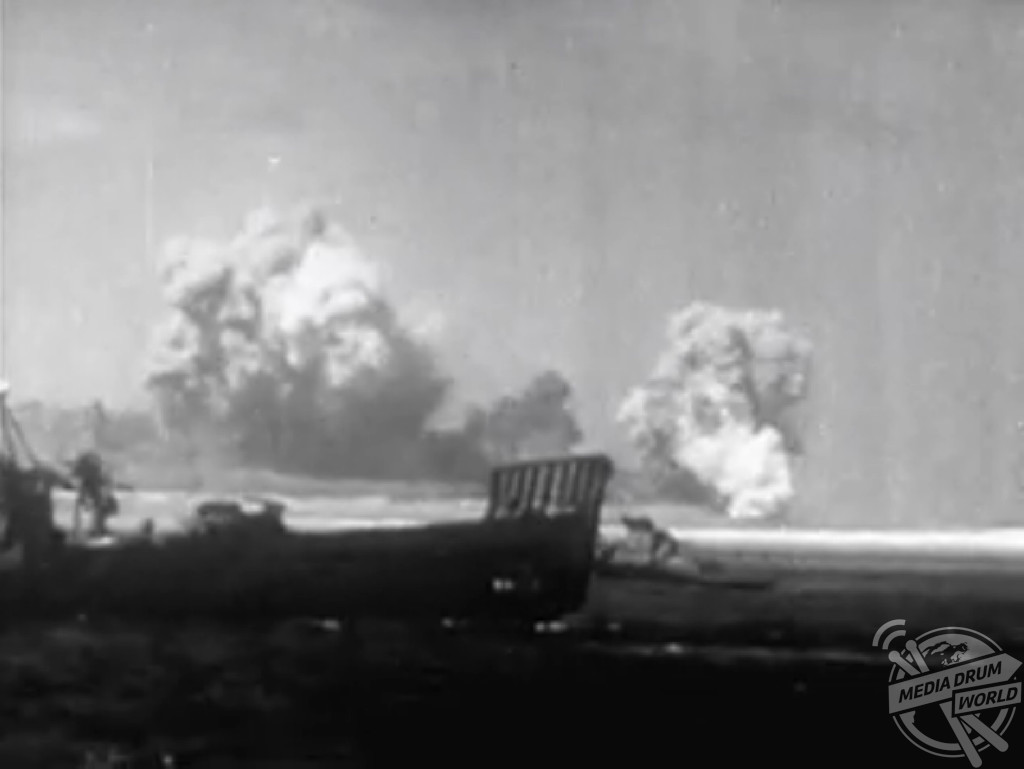By Tom Dare
INCREDIBLE FOOTAGE FROM THE SECOND WORLD WAR showing American troops capturing an island from the Japanese in the Pacific Ocean has remerged this week, giving Britons a rare glimpse into the war in the Pacific.
Video from America’s Gilbert and Marshall Islands campaign shows planes falling out of the skies in balls of flames as American and Japanese fighter jets squared off in the skies above.

Further footage shows the US bombarding the Japanese-held islands with artillery before launching a land invasion, with clips showing troops narrowly avoiding hails of bullets also featured in the footage.
The Gilbert and Marshall Islands campaign was the name given to a series of battles which took place between America and Japan across the Pacific between November 1943 and February 1944.

The US wanted to set up a series of bases across the Pacific to aid in future assaults on the Central Pacific, and the seizure of the Gilbert and Marshall Islands from the Japanese would be vital in providing the support they would need.
Due to a tactical ploy by the Americans, the Japanese had left certain islands such as Tarawa and Makin in the Gilberts and Kwajalein, Eniwetok, and Majuro in the Marshall Islands less heavily defended, believing an attack would be launched on different islands in the area.

Knowing this, the Americans targeted the islands with air strikes, artillery and a land invasion, making significant gains and forcing the Japanese from the islands one by one as they made their way across the area. It was not without loss, though, with the attack on the Gilbert islands proving particularly costly to the US. They suffered 2,459 dead and 2,286 wounded, a high number due to the slight unpreparedness of the forces, while Japan fared far worse, suffering a total of 5,085 dead and 247 captured.
The Marshall Islands campaign proved far less costly for the US, though, who used the lessons learned in the Gilbert Islands campaign and learning from them. In the Marshalls, the Americans lost 611 men, with 2,341 wounded and 260 missing, while the Japanese lost over 11,000 men and had 358 captured.








